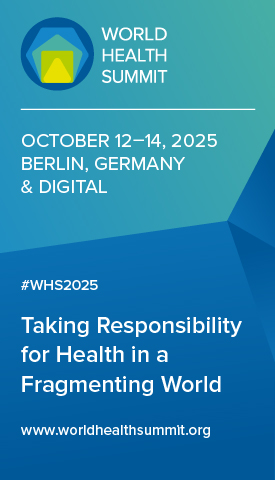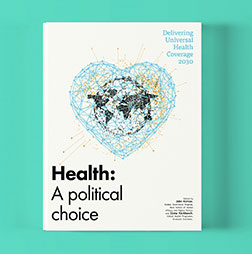Bridging climate and health to heal a fractured world
As our world fractures under the weight of climate shocks, pandemics, conflict and disinformation, health is on the front line. Climate change is not only disrupting weather patterns; it is reshaping the very foundations of human well-being. As president of the World Meteorological Organization and director-general of the National Center of Meteorology of the United Arab Emirates, I see every day how the climate crisis is also a health crisis.
Extreme weather events – heatwaves, floods, droughts, wildfires, sand and dust storms – are no longer rare anomalies. They are the new reality. Their health toll is staggering: rising heat-related mortality, worsening air pollution that already causes 7 million premature deaths annually, surges in vector- and water-borne diseases, food insecurity affecting nearly 300 million people, and profound mental health impacts from displacement and trauma. Health systems worldwide, already stretched, are struggling to absorb these cascading shocks.
Harnessing data to save lives
Protecting human health and saving lives are central to the mission of the WMO. This year we commemorate 75 years as the United Nations agency for weather, water and climate. Throughout our existence we have provided science and data, and fostered early warning systems that empower government leaders and society to take informed action.
In this fractured world, the role of trusted science and early warnings is more critical than ever. The WMO and the World Health Organization, through our Joint Climate and Health Programme, are working to bridge climate and health systems so that forecasts and warnings translate into lives saved. From the UN Early Warnings for All initiative, aiming to equip every country with effective early warning systems by 2027, to the Global Heat Health Information Network that connects practitioners across regions, our goal is clear: protect communities by transforming data into action.
Recent advances show what is possible. Our joint programmes are expanding health-relevant climate services at the country level, supported by over 30 partners. New regional hubs are emerging in Southeast Asia, South Asia and Latin America to tackle the growing threat of extreme heat. Authoritative platforms such as ClimaHealth.info provide open access to tools and knowledge that support policymakers and practitioners alike.
Our recently released joint report, Climate Change and Workplace Heat Stress, on the growing global health challenges posed by extreme heat, highlights key measures to protect workers. It also warns of long-term economic impacts, noting that productivity drops by 2–3% for every degree above 20°C.
At the national level, partnerships between meteorological and health institutions are no longer optional; they are essential. When we align science, operations and policy across these critical sectors, we go from generating forecasts to delivering intelligence – intelligence that saves lives, protects health and economic systems, and informs investment.
Building climate-resilient health systems
Yet profound challenges remain. Only 0.2% of climate adaptation finance currently reaches health systems. Data gaps, capacity disparities and siloed governance leave vulnerable communities exposed. Governance for extreme heat and air pollution remains fragmented, with limited cross-sectoral coordination or long-term strategies. In short, political choices – not technical barriers – stand in the way.
The choices before us are clear. Leaders must:
- Recognise that climate and health systems are interdependent – and design our institutions and financing around that reality.
- Shift from a reactive model to a preparedness model – investing in intelligence today to avoid losses tomorrow.
- Embed evidence-informed decision-making across both climate and health policy.
- Drastically increase investment in climate-resilient health systems.
- Break down silos between sectors to foster true integration.
- Empower vulnerable communities to be at the heart of surveillance, preparedness and response.
The theme of this year’s Health: A Political Choice issue, ‘The Future of Health in a Fractured World’, reminds us that fracture does not have to mean fragility. With foresight, trust in science and political will, fracture can become the force that galvanises collective resilience.
The window is narrow. The choices we make between now and 2030 will determine whether health systems crumble under climate stress or emerge stronger, more integrated and more equitable. The WMO is committed to ensuring that data, forecasts and early warnings continue to serve as a trusted foundation for this transformation.
By aligning climate and health action today, we can prevent tomorrow’s crises and build a healthier, more resilient world for all.












